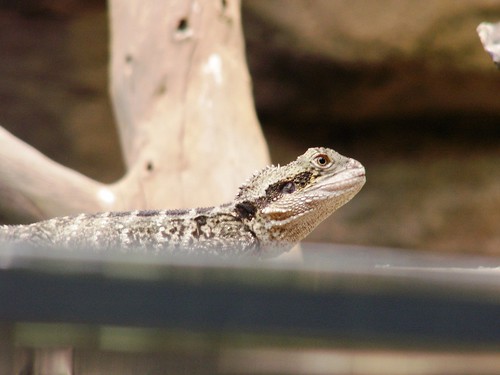Bearded dragons can eat a variety of plants, vegetables, and fruits from outside, as long as they are safe and non-toxic. Some safe plants for bearded dragons include Hoya Australis, Ficus, Echeveria, Bolivian Wandering Jew, Basil, Oregano, Leatherleaf Sedge, and Blushing Bride.
Some safe vegetables for bearded dragons include acorn squash, artichoke heart, asparagus, beets, and beetroot. Safe fruits include apples, apricots, bananas, blackberries, blueberries, cherries, cranberries, figs, grapes, guava, mango, melons, nectarines, papayas, peaches, pears, pineapples, plums, prunes, raspberries, and strawberries.
Bearded dragons can also eat some herbs and flowers, such as basil, carnations, chives, clover, dandelion greens, daylilies, impatiens, maple leaves, mint leaves, oregano, rose petals, rosemary, sage, and thyme.
Common plants and vegetables that bearded dragons can eat from outside
Bearded dragons are omnivorous, which means they require a balanced diet of both plant and animal-based foods. While there are many commercial diets available, feeding your bearded dragon fresh fruits and vegetables is an excellent way to ensure they receive a variety of nutrients.
In addition, many plants and vegetables can be found growing in your backyard or at the local farmer’s market. Here are some common plants and vegetables that you can feed your bearded dragon from outside:
Dandelion greens and flowers
Dandelion greens are one of the most commonly recommended greens for bearded dragons due to their high nutritional value. These greens contain calcium, phosphorus, vitamins A, C, E, and K as well as other beneficial minerals.
Additionally, dandelion flowers contain antioxidants that help reduce inflammation in the body. When picking dandelions for your bearded dragon make sure they have not been sprayed with pesticides or fertilizers.
Rinse them thoroughly before feeding them to your pet. Dandelions can also cause diarrhea if fed too much so it’s important to give them in moderation.
Hibiscus flowers
Hibiscus flowers not only add an exotic touch to salads but also offer a wide range of nutritional benefits for bearded dragons such as vitamin C, iron, calcium among others. Hibiscus is also known for its anti-inflammatory properties making it beneficial for overall health.
To prepare hibiscus flowers for your pet remove any green parts or stems since these have toxins harmful to pets including humans). Rinse the petals thoroughly before serving them raw or dried alongside other fresh vegetables.
Squash blossoms
Squash blossoms are another great option when considering what plants and vegetables can I feed my Bearded Dragon? They are a good source of vitamins A and C as well as calcium. These flowers also help promote healthy digestion in your pet.
When selecting squash blossoms, choose ones that are free from blemishes or rot. Rinse them with water and remove the stamen before serving them raw or slightly cooked to your bearded dragon.
Insects that can be found outside for your bearded dragon to eat
Crickets
Crickets are a great source of protein for bearded dragons. They contain essential amino acids and nutrients that are vital for their growth and development. Bearded dragons can easily catch crickets themselves if they’re allowed to roam around outside in a safe, enclosed space.
Alternatively, you can purchase them from a pet store or online. It’s important to ensure that the crickets are gut loaded with nutritious foods before feeding them to your dragon.
Grasshoppers
Grasshoppers are another excellent source of protein for bearded dragons. They’re high in calcium, which is essential for strong bones and muscle function.
They also contain other nutrients like phosphorus and vitamin B12, which help with metabolism and energy production. Bearded dragons can catch grasshoppers themselves if they’re available in their environment, or you can purchase them from a pet store or online.
Beetles
Beetles may not be as commonly consumed by bearded dragons as crickets or grasshoppers, but they’re still an excellent source of protein and other nutrients like calcium and phosphorus. Some beetles like mealworms can also serve as a good staple feeder food when offered correctly. You can catch beetles yourself if there are any in your area, but it’s important to research which species of beetle is safe for your dragon to consume.
Conclusion
Feeding your bearded dragon insects that have been found outside is not only beneficial; it provides variety from the usual diet – commercial reptile feeders – which may not provide all the essential nutrients required by the animal every time; but it also gives them an opportunity to exhibit natural instincts as predators where they hunt down their prey.
It’s important to ensure that the insects are from safe environments and are gut loaded with nutritious food before feeding them to your dragon. With a little bit of research and careful attention, you can provide your bearded dragon with a healthy and varied diet that will help them thrive both physically and mentally.



